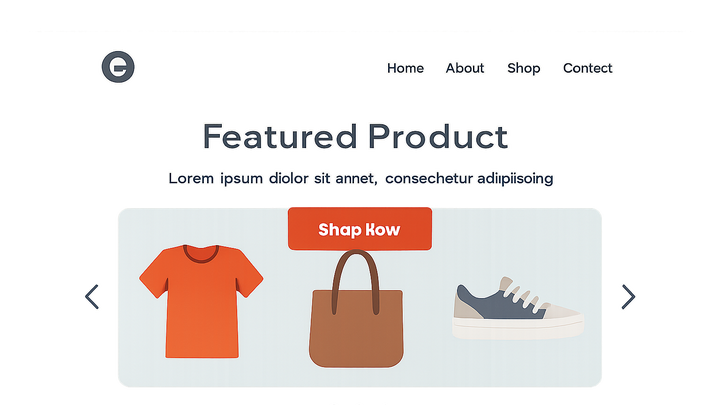Published on 2025-06-29T21:46:12Z
What Is an eCommerce Homepage Slider?
eCommerce homepage sliders, often called carousels, are dynamic banner elements that cycle through images, promotions, or featured products. They occupy prime real estate above the fold, aiming to capture visitor attention and highlight multiple offerings. While sliders can showcase a variety of messages in limited space, they also carry risks like banner blindness, slower load times, and potential accessibility issues. From an SEO perspective, hidden content in non-indexed slides may not be crawled, and large image files can impact page speed. In terms of UX, sliders can confuse users if they auto-rotate too quickly or lack clear navigation controls. Tools like Prevue.me can analyze homepage sliders to provide actionable CRO insights, optimize call-to-action placement, ensure accessibility compliance, and improve SEO performance. By understanding both the benefits and challenges, eCommerce teams can make data-driven decisions on when and how to implement sliders effectively.
Ecommerce homepage sliders
Rotating banners on eCommerce homepages that highlight promotions but require careful optimization for CRO, UX, SEO, and accessibility.
Definition and Purpose
An overview of what homepage sliders are and why eCommerce sites use them.
-
Definition
eCommerce homepage sliders are rotating content areas that display multiple images or messages in a single prominent page section.
-
Purpose
They help highlight different products, promotions, or announcements without occupying additional page real estate.
Benefits and Challenges
A balanced look at the advantages and potential drawbacks of using sliders on eCommerce homepages.
-
Benefits
Key reasons teams choose sliders include:
- Space efficiency:
Show multiple messages or products in a single page area.
- Dynamic engagement:
Motion can draw user attention and create visual interest.
- Testing flexibility:
Easily swap or reorder slides for A/B tests and personalization.
- Space efficiency:
-
Challenges
Common pitfalls to watch for include:
- Banner blindness:
Users often ignore rotating banners as they perceive them as ads.
- Performance impact:
Large or unoptimized images can slow page load times.
- Accessibility:
Auto-rotating content can be disorienting for screen readers and keyboard users.
- Banner blindness:
Best Practices
Recommendations for optimizing sliders to maximize conversions, usability, SEO, and accessibility.
-
Limit slides and rotation speed
Keep slide count to 3–5 and use a moderate auto-rotate interval so users can read and interact.
-
Clear calls to action (ctas)
Each slide should feature a distinct, prominent CTA that directly relates to its message.
-
Mobile and responsive design
Ensure sliders adapt seamlessly to different screen sizes and support touch interactions.
- Tap-friendly controls:
Use large touch targets for navigation arrows and indicators.
- Responsive images:
Serve appropriately sized images based on device resolution.
- Tap-friendly controls:
-
Accessibility compliance
Provide user controls and semantic markup to support keyboard and screen-reader users.
- Pause/stop buttons:
Allow users to control or disable automatic rotation.
- Screen reader labels:
Use meaningful
alttext and ARIA attributes to describe slide content.
- Pause/stop buttons:
Tools and Examples
Examples of SaaS products and methods for auditing and improving homepage sliders.
-
Prevue.me
A SaaS platform offering actionable insights on CRO, SEO, UX, and accessibility for homepage sliders and other site elements.
- Actionable cro critiques:
Data-driven recommendations to improve click-through rates and conversions.
- Seo insights:
Identifies hidden content issues and performance bottlenecks.
- Accessibility checks:
Highlights ARIA, keyboard navigation, and color-contrast gaps.
- Actionable cro critiques:
-
Additional tools
Other popular tools for auditing and testing sliders include:
- Google lighthouse:
Provides performance, accessibility, and best-practice scores.
- Optimizely:
Facilitates A/B testing of slider variations and CTAs.
- Hotjar:
Offers heatmaps and session recordings to observe user interactions.
- Google lighthouse:
